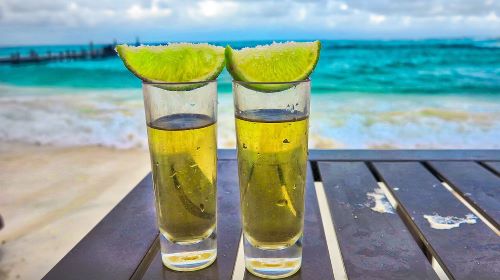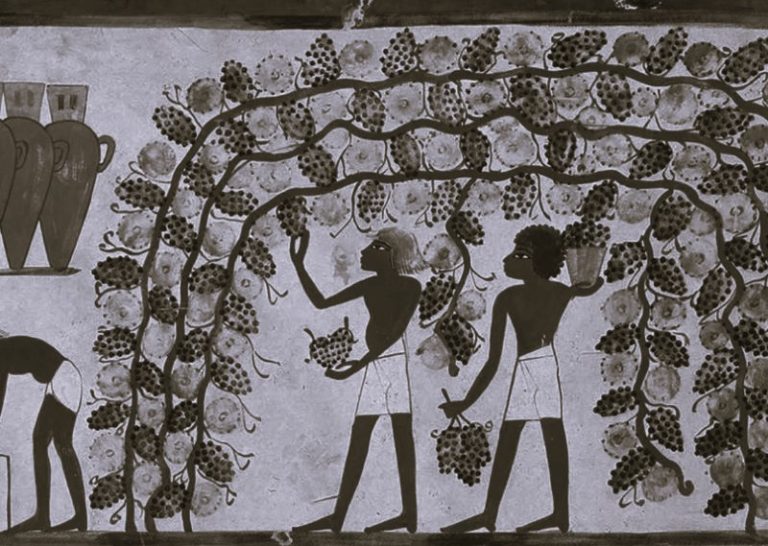

Tequila is more than just a spirit; it’s a cultural emblem of Mexico, woven deeply into the fabric of the country’s history and traditions. Originating from the state of Jalisco, this distinctive beverage is celebrated globally for its unique flavors and strong ties to Mexican heritage. The production of tequila is governed by strict regulations, ensuring that it can only be produced in certain regions of Mexico. This geographical designation helps preserve the traditional methods and cultural significance that tequila manufacturing has maintained over centuries.
Harvesting Blue Agave
The Role of Jimadores
The harvesting of blue agave is a skilled trade primarily carried out by experienced laborers known as jimadores. These artisans use a special tool called a coa to carefully cut away the leaves of the agave plant, revealing the core, or piña, which is the source of tequila. The expertise of the jimadores is crucial, as they must identify and harvest only mature agave plants, which typically take between 8 to 12 years to reach the ideal stage.
Selecting and Harvesting Mature Agave Plants
For tequila to develop its unique flavors, the selection of mature blue agave plants is essential. These plants are ready for harvest once they have accumulated optimal levels of sugars necessary for fermentation. The maturity of agave is determined by the jimadores, who look for a series of physical signs in the piñas, such as size and color changes. This careful selection ensures the high quality of the raw material, which significantly affects the final product.
Extracting the Piña
Once the agave leaves are trimmed, the piña is extracted from the ground. These piñas can weigh anywhere from 80 to 200 pounds and are transported to distilleries where they will be baked and crushed. To collect the pure, concentrated sap that is rich in sugars and prepare the groundwork for subsequent stages of tequila extraction methods, the process is labor-intensive yet essential.
Regions Ideal for Agave Cultivation
The best blue agave is typically grown in the rich, sandy soils of Jalisco, Mexico. The region’s climate—characterized by hot days and cool nights—contributes to the agave’s growth cycle and sugar development. Other regions authorized for blue agave harvesting include parts of Guanajuato, Michoacán, Nayarit, and Tamaulipas. The geographical location plays a significant role in the cultivation, influencing the plant’s physiology and the subtle flavor nuances of artisanal tequila production.
Baking and Crushing the Piñas
Conversion of Carbohydrates to Sugars
After harvesting, the piñas are transported to the distillery where they undergo a critical transformation. The piñas are baked in ovens or autoclaves, where the intense heat slowly converts their complex carbohydrates into fermentable sugars. This process is pivotal for tequila production methods as it determines the sweetness and quality of the liquid extracted in subsequent steps. The baking has to be monitored carefully to ensure that the piñas do not burn, which could impart an undesirable bitter flavor to the tequila.
Traditional Tahona Stones vs. Mechanical Mills
Once baked, the softened piñas are ready to be crushed to release the sugary juice known as aguamiel. This can be done in two primary ways: using a traditional tahona stone or through mechanical mills. The tahona, a large stone wheel traditionally pulled by animals, crushes the agave fibers gently, often resulting in a richer, more complex flavor profile. Mechanical mills, however, are more efficient but can sacrifice flavor for expedience.
Collecting the Extracted Juice (Aguamiel)
The aguamiel, or ‘honey water,’ is the sweet juice extracted from the crushed agave. This liquid forms the base for tequila fermentation. It is collected in large vats, where impurities and excess fibers are allowed to settle or are filtered out, ensuring that only the clearest juice is fermented. The quality of aguamiel directly influences the smoothness and flavor of the distilled tequila, making this step essential for producing a premium product.
Ensuring Quality Through Baking Techniques
The tequila production process of baking the piñas is both an art and a science, crucial for the quality of the final tequila. Here’s how quality is ensured:
- Temperature Control: Maintaining the correct temperature is vital. Too high and the sugars might caramelize or burn, producing bitter flavors; too low and the conversion of carbohydrates to sugars may be incomplete.
- Time Management: The duration of baking is carefully calibrated. Longer baking at lower temperatures can enhance flavor complexity.
- Moisture Levels: Proper humidity must be maintained in the ovens to prevent the piñas from drying out, which helps in achieving a more uniform sugar conversion.
- Batch Consistency: Batches of piñas are sorted by size and maturity to ensure even cooking and consistent sugar content in each batch.
These steps are meticulously monitored, utilizing both traditional techniques and modern technology to achieve the best results. By adhering to these standards, distilleries can produce tequila with the desired flavors and aromas, ensuring that each bottle reflects the rich cultural heritage of this iconic Mexican spirit.
Fermentation Process
Adding Yeast to Aguamiel
The transformation from aguamiel to a fermentable wash begins with the addition of yeast. This crucial step in tequila fermentation involves introducing carefully selected strains of yeast that thrive in the sugary environment of the aguamiel. The type of yeast used can vary, with some distilleries using commercial strains for consistency, while others prefer natural yeasts from the environment, which can add unique local flavors to the tequila.
Duration and Conditions of Fermentation
The duration of the fermentation process can vary from 48 hours to several days, heavily influenced by the fermentation environment and the yeast used. Warmer temperatures generally accelerate fermentation but can lead to less complex flavor profiles. Conversely, cooler conditions prolong fermentation, allowing for the development of deeper, richer flavors in the tequila.
Characteristics of Fermented Liquid (Mosto)
The mosto, or fermented agave juice, is the base from which tequila is distilled. Its quality and characteristics are pivotal in defining the tequila’s final flavor. Here are some critical aspects of mosto:
- Alcohol Content: The alcohol percentage by volume can vary, typically between 5% to 7%, depending on the efficiency of the fermentation.
- Flavor Profile: The flavors developed during fermentation can range from sweet and fruity to earthy and herbaceous, influenced by the yeast strains and fermentation conditions.
- Aroma: The aromatic compounds developed during this stage are primarily esters and alcohols, which contribute significantly to the tequila’s nose post-distillation.
- Color: Mosto is generally clear or slightly cloudy, depending on the amount of solid material remaining from the aguamiel.
- Texture: The presence of residual sugars and proteins can give the mosto a slightly viscous texture, which is usually clarified before distillation.
Understanding these characteristics is essential for distillers to predict how the mosto will behave during distillation and the kind of flavors and aromas that will be emphasized in the final product. Each attribute of the mosto plays a role in crafting the tequila’s unique identity, reflecting the artisanal care and technical precision involved in handcrafted tequila production.
How Tequila is Produced and Distilled
First Distillation
The initial phase of tequila distillation, known as destrozamiento or “destruction,” involves heating the fermented mosto in pot stills or column stills. This stage is designed to separate the alcohol from the water, flavors, and other components. The heat causes the alcohol and other volatiles to vaporize, which then condense back into a liquid form. This first distillation typically produces a product called “ordinario,” which is a low-proof alcohol. To reach the high requirements of premium tequila, this liquid still needs to be refined further because it is still full of impurities.
Separation into Heads, Hearts, and Tails
During distillation, the tequila is separated into three parts: the heads, hearts, and tails. The heads contain the initial alcohols and other volatile substances that evaporate first; these are often high in undesirable compounds and are usually discarded or redistilled. The hearts are the middle cut and the most desirable portion, containing the optimal balance of flavors and alcohol strength. The tails, collected last, contain heavier alcohols and fusel oils, and like the heads, can be either discarded or reprocessed to extract usable alcohol.
Second Distillation: Rectification
The second distillation, or rectification, refines the ordinario into a purer, higher-proof alcohol. This stage further concentrates the alcohol and enhances the desired flavors that define tequila. The precision in controlling the temperature and timing during this phase is crucial as it influences the concentration of flavors and the overall smoothness of the tequila. The final product of the second distillation is adjusted to achieve the desired alcohol content by diluting it with water. This adjustment is essential for flavor balance and legal compliance, as Mexican law regulates the alcohol levels for tequila.
Exploring Tequila Cocktails
Experimentation with types of tequila cocktails continues to evolve as mixologists blend tequila with a variety of flavors, from spicy jalapeños to sweet agave syrups. Unique ingredients like mezcal, cucumber, or even hot sauce are being incorporated to create innovative cocktails that appeal to a broad audience, showcasing tequila’s flexibility in mixology.
When deciding to buy tequila, considering the production methods and tequila aging techniques can guide enthusiasts to select a bottle that best suits their taste preferences. Whether it’s a vibrant, unaged Blanco, a richly nuanced Reposado, or a deeply complex Añejo, each type offers a distinct experience. Understanding these differences enables consumers to make informed choices, enhancing their enjoyment and appreciation of tequila drinks, whether sipped neat, on the rocks or mixed into a sophisticated cocktail.


